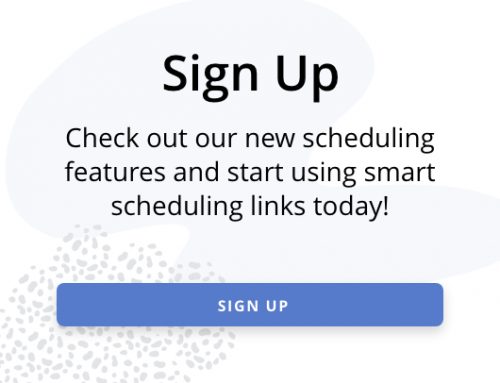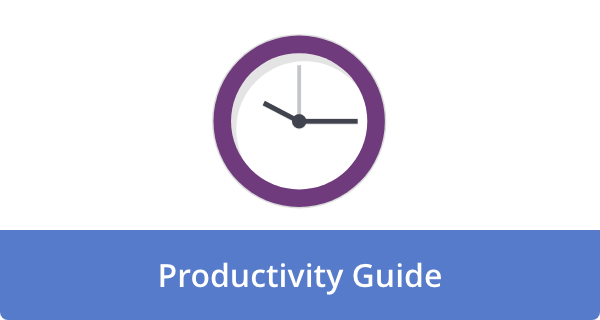

Everyone has the same amount of time, 24 hours a day, but how we use it varies wildly. Some wake up with a plan and can power through their to-do list like a well-oiled machine. Others, however, feel as though time is slipping through their fingers despite their best intentions.
The way you view time is most likely tied to your natural habits, mindset, and approach to life. So, to improve your work, rest, and living, you must first understand your time management style.
Here, we’ll explore five common time management styles and how to identify your own — no matter where you’re starting from.
Why Time Management Styles Matter
As with food, money, or exercise, time management is a relationship. It’s not about one-size-fits-all solutions. Instead, it’s about recognizing, understanding, and adapting patterns. By understanding your natural style, you can develop strategies aligned with your strengths and gently correct your weaknesses.
There’s no point in labeling yourself as “good” or “bad” at managing your time. Instead, to make better, kinder time choices, you need to become aware of how you operate.
Unveiling the Spectrum of Time Management Styles
Now, let’s explore common time management styles, each offering a distinct view of how we deal with time.
The Steadfast Architect: The Structured Planner
Imagine someone who finds comfort in carefully arranged columns of a well-ordered calendar, who takes pride in having their tasks meticulously checked off lists, and whose days unfold within the secure embrace of well-established routines. This is the Structured Planner.
Key traits;
- Prefers calendars, detailed checklists, and predictable routines.
- Schedules activities down to the hour, approaching the day with a detailed plan.
- Feels comfortable and secure due to predictability and structure.
Strengths. Organization and discipline are the hallmarks of structured planners. With methodical precision, they dissect ambitious goals into manageable steps. Under their watchful eye, deadlines are rarely missed, and their reliability is unwavering.
Challenges. The very strength of a structure can become a point of vulnerability. When unforeseen changes disrupt meticulously crafted plans, rigidity can lead to feelings of overwhelm and frustration. Unexpected events can also become stressful. Furthermore, pursuing the perfect plan can sometimes overshadow the act of actually doing, leading to procrastination.
How to cultivate growth.
- Integrate buffer time. You should always plan for unscheduled time to accommodate life’s inevitable surprises.
- Embrace flexibility. Schedule open, unstructured time to encourage spontaneity and flexibility.
- Prioritize progress over perfection. Focus on consistent action rather than flawless planning. Don’t forget that “done” is often better than “perfect.”
- Helpful tools. You can use daily planners (both digital and analog), collaborative platforms like Trello, versatile tools like Notion, or an analog bullet journal for tactile satisfaction.
The Adrenaline Alchemist: The Last-Minute Sprinter
In contrast to the meticulous planner, there is the person who seems to thrive in the pressure of deadlines, whose energy ignites as the clock ticks down. We’re talking about the Last-Minute Sprinter.
Key traits;
- When pressured by deadlines, they become more focused and productive.
- Often postpones tasks until the eleventh hour, making action appear urgent.
- Extremely energetic, achieving remarkable feats in a short amount of time.
Strengths. It is remarkable how fast, laser-focused, and creative Sprinters can be when the pressure is on. As a result, they often achieve impressive results under duress and seem to be easy in navigating high-stakes situations.
Challenges. This high-octane approach has a significant cost. Frequently, it leads to burnout, chronic stress, and inconsistency in performance. If you wait until the last minute, you might compromise quality or miss your deadline. When procrastination is followed by frantic activity, it can accumulate mental and emotional exhaustion.
How to cultivate growth.
- Impose mini-deadlines. Establish smaller, self-imposed deadlines leading up to the final deadline to simulate the pressure that boosts productivity.
- Segment tasks into manageable units. Break down large tasks into smaller, less daunting chunks to create a sense of accomplishment early on.
- Harness the power of timers. You can mimic your natural urgency by employing techniques like the Pomodoro Technique.
- Helpful tools. Take advantage of time management apps like Pomofocus and focus-enhancing platforms like Focusmate (for virtual co-working).
The Intuitive Navigator: The Flow Follower
Consider someone who follows their inner compass, sensitive to shifting moods, bursts of inspiration, and fluctuating energy levels. We call this the Flow Follower.
Key traits;
- Prefers flexibility over rigid schedules and predefined plans.
- Adapts their daily activities based on their mood, spontaneous inspiration, and current energy level.
- They thrive on autonomy and freedom to pursue tasks that resonate with where they are at the moment.
Strengths. It is common for Flow Followers to be highly creative, highly intuitive, and capable of profound focus when inspiration strikes them. As a result of their flexibility, they are able to adapt to changing circumstances and produce their best work when they feel emotionally and mentally aligned with their work.
Challenges. Without structure, one may lose sight of priorities and lose track of time. It is possible to inadvertently overlook important tasks and become dependent on fleeting inspirations for overall productivity. There can also be significant challenges associated with external deadlines and team expectations.
How to cultivate growth;
- Embrace flexible routines. Establish loose routines rather than rigid schedules to provide a framework without stifling spontaneity.
- Maintain a concise list of daily priorities. To ensure that critical items don’t get lost in the flow of your day, create a short, manageable list of essential tasks.
- Track your productive rhythms. Focus on the times of day when you are most energized and focused, and strategically plan important tasks around these times.
- Helpful tools. Utilize time-blocking with built-in flexibility, mood-tracking apps for identifying patterns in your energy levels, and dashboard tools like Notion for creating unique organization systems.
The Benevolent Multitasker: The Overcommitted Juggler
Picture someone who has an almost innate desire to help, to contribute, to be involved in a multitude of endeavors at the same time. This is the Overcommitted Juggler.
Key traits;
- Is prone to saying “yes” to most requests.
- They often find themselves managing an overwhelming number of concurrent projects.
- Has difficulty setting healthy boundaries and prioritizing tasks effectively.
Strengths. Due to their willingness to take initiative and engage in a variety of activities, jugglers are often energetic, inherently helpful, and frequently high achievers. They make valuable team members due to their collaborative spirit and problem-solving skills.
Challenges. Burnout is often a consequence of overcommitment. When one spreads himself or herself too thin, deadlines are missed, stress levels increase, and the quality of work declines. Often, jugglers feel like they are constantly playing catch-up, unable to focus deeply on any one task.
How to cultivate growth.
- Master the art of saying “no” (or “not now”). Consider alternative timelines or politely decline new commitments if your plate is already full.
- Employ a priority matrix. To focus on what matters most, categorize tasks according to urgency and importance using tools such as the Eisenhower Box.
- Schedule and protect uninterrupted work time. Dedicate specific blocks of time to focused work, and actively protect these times from interruptions.
- Helpful tools. Time-tracking software like RescueTime can help you understand how you spend your time, and priority planning templates based on frameworks such as the Eisenhower Matrix can help you prioritize your tasks.
The Thoughtful Strategist: The Reflective Drifter
Imagine a person who devotes significant time to contemplation, meticulous planning, and thoughtful reflection before acting. We are looking at the Reflective Drifter here.
Key traits;
- Thinks through tasks, strategizes approaches, and reflects on potential outcomes extensively.
- Tends to delay initiating action until all elements feel perfectly aligned.
- It is easily ensnared in cycles of overthinking and analysis paralysis.
Strengths. The Reflective Drifter has a strategic mind, a keen sense of underlying patterns, and an excellent ability to identify potential pitfalls. In addition to considering long-term implications, they also bring valuable perspectives to the table.
Challenges. One of the biggest challenges is action paralysis. If you tend to over-analyze, you can significantly delay a project’s execution. When faced with uncertainty or perceived imperfection, Reflective Drifters may find it difficult to finalize or start projects.
How to cultivate growth.
- Embrace “good enough” as a guiding principle. Be conscious of your perfectionistic tendencies by recognizing that timely progress often trumps absolute perfection.
- Integrate reflection with concrete action steps. After reflection periods, follow up with actionable steps for insights to become tangible progress.
- Impose artificial deadlines. Even if you don’t have an external deadline, set self-imposed deadlines to create a sense of urgency and move past indecision.
- Helpful tools. Organize thoughts visually using mind-mapping applications, engage an accountability partner to provide motivation, and use goal-tracking apps to stay on track.
The Art of Self-Discovery: Identifying and Honoring Your Unique Style
You may have a blend of several styles. Perhaps you’re more of a Sprinter, but when work gets hectic, you become a Juggler. You may be a Reflective Drifter during planning season and then switch to Flow Follower mode once the creative work begins.
As such, it’s not about having an “ideal” style — it’s about being aware.
The following questions can help you begin your journey of self-discovery;
- When am I most productive and focused during the day?
- When I am stressed or behind on my tasks, what patterns emerge?
- Do I tend to overplan, underplan, or avoid planning altogether?
- What is my typical response to deadlines? Are they powerful motivators or overwhelming sources of stress?
With a deeper understanding of your natural inclinations and tendencies, you can begin to make deliberate adjustments to promote more effective outcomes, reduce unnecessary stress, and cultivate greater balance in your life.
Cultivating a More Harmonious Relationship with Time: Universal Strategies for Growth
No matter what time management style you prefer, a few fundamental strategies can help you improve your relationship with time:
- Prioritize with purpose. Some tasks are more important than others, and some require immediate attention. Learn to distinguish what is genuinely essential from what is truly urgent. Also, plan your activities based on your values and long-term goals.
- Construct routines that resonate. Experiment with a variety of routines to find routines that support your individual lifestyle and natural energy fluctuations, rather than forcing yourself into someone else’s productivity system. Even a loose framework can provide a valuable anchor for your day.
- Engage in weekly reflection. Each week, review what worked well, what presented challenges, and what adjustments might be helpful. Rather than operating on autopilot, this practice allows you to reset with intention.
- Extend kindness to yourself. Remember that time management is a skill that develops with practice, not an inherent personality trait. You’re not bad at managing your time; you’re just learning how to do so better. Be willing to accept occasional mistakes, the need for a reset, and the natural growth process.
Final Thoughts
Your relationship with time is personal. Habits, personalities, and even past experiences influence it. However, it is not fixed. By knowing your time management style, you can make small changes that will, over time, have a large impact.
No matter what kind of planner, sprinter, or drifter you are, the key is not to become someone else. The goal is to understand yourself better and use that insight to work with time instead of against it.
FAQs
What does it mean to have a “relationship with time”?
You can think of it as how you use time, whether through habitual patterns, beliefs, or attitudes. You can use it to manage deadlines, prioritize tasks, and handle interruptions.
Why is it important to identify my time management style?
First and foremost, you need to be aware of your natural tendencies — your strengths and weaknesses regarding time management. By leveraging your strengths, you can address your specific challenges more effectively.
How can I identify my time management style?
A good way to identify your style is to reflect on your habits, your reaction to deadlines, how you plan (or don’t plan) your day, and where you typically experience time-related stress. Quizzes and assessments available online and in books can also be helpful.
Can I change my time management style?
You can develop better time management strategies by consciously changing your habits and consistently practicing. Learning new techniques and incorporating them into your daily routine is key.
What are some general tips for improving time management, regardless of style?
Here are some universal tips;
- Setting clear and attainable goals.
- The ability to prioritize tasks effectively.
- Make a plan for the day or the week.
- Keeping distractions to a minimum.
- Reducing the size of a task into smaller, more manageable steps.
- When possible, learn to delegate.
- To avoid burnout, take regular breaks.
- You should reflect on your time usage and make changes as necessary.
Image Credit: Thirdman; Pexels











John Rampton
John’s goal in life is to make people’s lives much more productive. Upping productivity allows us to spend more time doing the things we enjoy most. John was recently recognized by Entrepreneur Magazine as being one of the top marketers in the World. John is co-founder of Calendar.